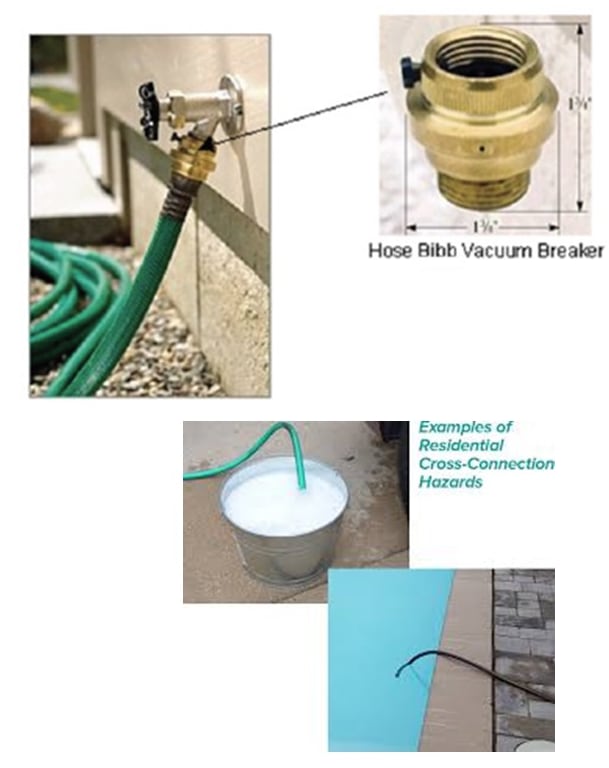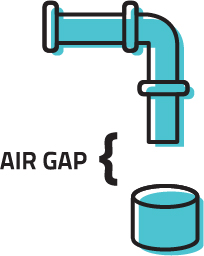Please continue on this page for more information on cross connection, backflow prevention, and requirements and information on common cross connection hazards. However, if you need
requirements and information on irrigation systems please go here.
requirements and information on swimming pools please go here.
CROSS CONNECTION CONTROL AND BACKFLOW PREVENTION
What is a CROSS CONNECTION? A physical connection between a public water system and another supply of unknown or questionable quality, any source which may contain contaminating or polluting substances, or any source of water treated to a lesser degree in the treatment process.
What is BACKFLOW? Water flowing opposite to its intended direction, either from a loss of pressure in the supply lines or an increase in pressure on the customer’s side (in either of these situations, if any affected customer’s pipes include a cross connection, contaminants could be drawn through the cross connection into that customer’s pipes—and, if the backflow continues, perhaps even into the water mains).
Water Hose
The most common type of cross connection is a water hose. Submerging the water hose in water, connecting a hose-end sprayer to apply pesticide or fertilizer to your yard, flushing out clogged pipes or gutters, and many other everyday occurrences can cause a cross connection risk. Therefore, it is recommended that all outdoor faucets have a hose bib vacuum breaker installed. All construction built after January 1, 1996, is required to have HBVB installed on outdoor faucets. These can be purchased at local hardware stores.

Water Troughs
Watering troughs for animals can be a cross connection risk. Watering troughs that are filled by:
- Water hoses need a hose bib vacuum breaker, and it is recommended to have it above the flood rim. Water hoses should never be submerged in water.
- Automatic Float Valves need to be installed properly above the flood rim. We recommend the anti-siphon float valve which has the necessary backflow prevention if installed and maintained properly.
- Fills from the bottom, animal powered watering, and other auto-fill devices pose different types of possible cross connection situations and anyone with these devices need to contact Luella SUD. A hose bibb vacuum breaker cannot be under pressure for more than 12 hours. Therefore, having a hose bibb vacuum breaker may not be sufficient in backflow prevention.

Farm Trucks and Other Equipment
Spray rigs and other equipment that are filled directly from the public water system need to have a hose bibb vacuum breaker on the faucet. Also, it is recommended to have a one-inch air gap between the public water system and tank.
An Air Gap is the preferred method of backflow prevention device for water trucks.

Other Potential Hazards
Baptistries, wells, and other instances that the public water system is connected directly to a potential cross connection risk need to be assessed on the appropriate protection needed unless there is a minimum of one inch air gap between the public water system and the flood rim.
A list of common hazards and the appropriate backflow prevention.
